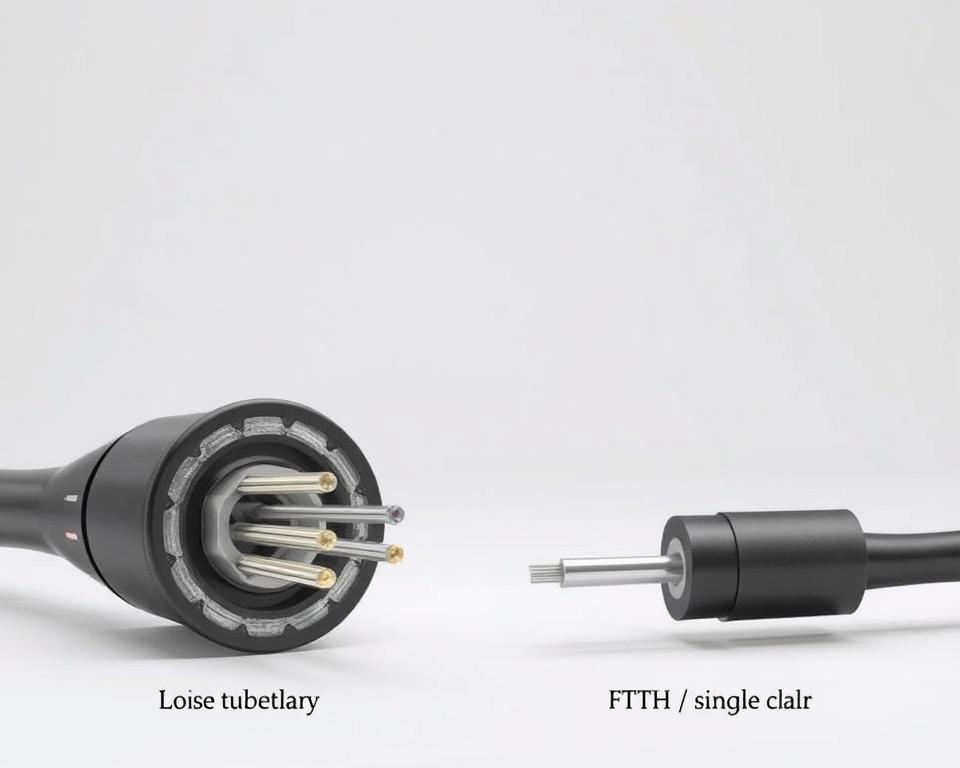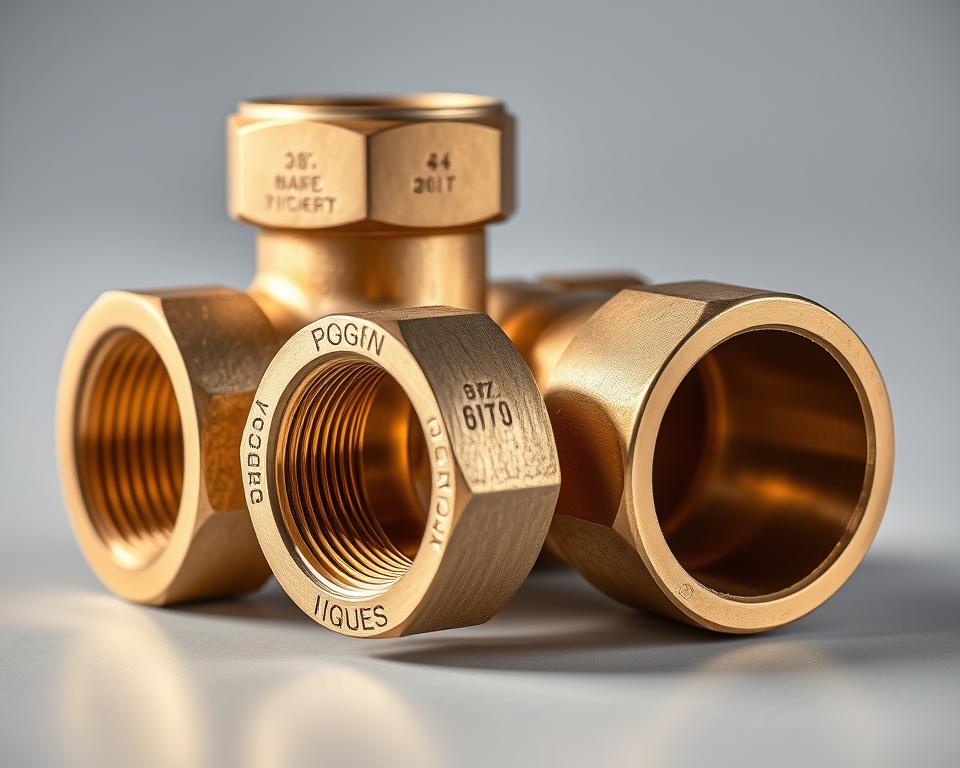The Definitive Guide to FTTH cable Production Line
Here’s a complete overview of the FTTH cable production line. This guide will take you deep into the world of fiber optic cables and their essential part in making high-speed data transmission possible. The continuous growth in demand for faster and more reliable internet connectivity makes it essential to understand the details of FTTH cable production. This guide will offer you valuable insights into the production of Fiber cable sheathing line, covering everything from the fundamentals of cable infrastructure to the detailed manufacturing process.
No matter if you’re a newcomer to the industry or aiming to better your understanding, this guide will help you. We will explore the key components of FTTH cable systems, the role of optical fibers in FTTH technology, and the process of transforming raw materials into high-quality fiber optic cables. Moreover, we will examine design considerations, stranding techniques, buffering and jacketing processes, and the efficient working of the FTTH cable production line.
Stay tuned for the advanced technologies transforming FTTH cable manufacturing, as well as the importance of testing and quality assurance in ensuring the reliability and durability of fiber optic cables. This guide will also cover the concluding phases of packaging and distribution, ensuring the FTTH cable production line operates without interruption from start to finish.
Summary of Key Points:
- FTTH cable production line plays a vital role in providing high-speed data transmission.
- It’s crucial to understand the fundamentals of FTTH cable infrastructure and its main components.
- The step-by-step production of FTTH cable, starting with silica and resulting in fiber, includes fiber drawing, coating application, and testing.
- Performance is optimized when configurations and layouts are designed to meet the unique needs of a network.
- Stranding techniques and central strength members contribute to the support and protection of the fiber.
An Introduction to FTTH cable Production
A clear understanding of the cable infrastructure, key components, and the role of optical fibers in FTTH technology is essential to comprehend the FTTH cable production process.
Getting to Know the FTTH cable Infrastructure
The FTTH cable infrastructure refers to the network of cables, connectors, and distribution points that enable the transmission of data in fiber-to-the-home (FTTH) systems. It forms the backbone of high-speed internet connectivity, allowing for seamless data transfer between the provider’s network and the end user’s premises.

Essential Elements of FTTH cable Systems
FTTH cable systems consist of several key components that work together to ensure the smooth and efficient transmission of data. These components include:
- Fiber optic cables: These cables are responsible for carrying the data signals in the form of light. With a design that provides high bandwidth and minimizes signal loss, they ensure fast and reliable data transmission.
- Joining fiber optic cables to other cables or devices is a crucial role of connectors, which also facilitate connection and disconnection when needed. Signal loss is minimized by the secure and reliable connection they provide.
- The division and distribution of fiber optic signals to multiple end users is the function of distribution points. Their purpose is to help each user receive the correct amount of bandwidth while maintaining the overall network performance.
The Role of Optical Fibers in FTTH Technology
The most important part of FTTH technology is optical fibers. Efficient transmission of data signals in the form of light pulses is the purpose of these thin strands of glass or plastic. Optical fibers are known for their high bandwidth capacity, low signal loss, and immunity to electromagnetic interference, making them ideal for high-speed data transmission.
Each fiber has a core that carries the light signals, and this core is encased in a cladding layer that reflects the light back into the core, preventing signal loss. This construction allows optical fibers to transmit data over long distances without degradation in signal quality or speed.
Silica to Fiber: The FTTH cable Production Process
How Fiber Drawing Creates the Core of the cable
In the FTTH cable production process, the first step is fiber drawing, which involves crafting the core of the cable. By pulling and stretching a silica glass preform, this process converts it into a long, thin fiber. Careful control of the fiber’s diameter during fiber drawing is essential for optimal performance. How well and accurately the cable transmits data depends heavily on the quality and composition of its core.
Applying a Protective Layer: Coating Application for Durability
Coating application is the step that follows fiber drawing. In this stage, a protective layer, known as a coating, is applied to the fiber. The coating serves multiple purposes: it acts as a buffer against external factors such as moisture, enhancing the fiber’s long-term durability and reliability. In addition, the coating material is chosen with care to ensure it has the correct mechanical properties, so the fiber will remain intact and protected throughout its lifespan.
Ensuring Quality: Fiber Testing Throughout Production
The quality and performance of the fiber are verified through fiber testing, which is done at different stages of the FTTH cable production process. During testing, the fiber’s physical parameters, like diameter, attenuation, and tensile strength, are measured, and the coating is checked for uniformity and how well it adheres. The overall quality and performance of the final FTTH cables are guaranteed by these crucial tests, which ensure the fiber meets the necessary standards and specifications.
| Stage of Production | Parameters Tested |
|---|---|
| Fiber Drawing | Diameter, Attenuation, Tensile Strength |
| Coating Application | Coating Thickness, Uniformity, Adhesion |
Table: Testing Parameters at Different Stages of FTTH cable Production
The testing parameters measured at different stages of the FTTH cable production process are summarized in the table above. Rigorous testing allows manufacturers to guarantee that each fiber used in the cables meets the required quality standards, ultimately contributing to the high-performance and reliability of FTTH cable systems.
Design Considerations for FTTH cable Configurations
In the world of fiber-to-the-home (FTTH) cable production, the design of cable configurations plays a crucial role in meeting network requirements and optimizing performance. Considering network capacity, scalability, and the desired speed of data transmission is what cable design entails. Efficient deployment and maximized capabilities of their network infrastructure are achieved by companies that tailor cable configurations to their specific needs.
When it comes to FTTH cables, there are many different configurations and layouts available, each with its own benefits and things to think about:
- The main distribution point is connected to each subscriber in a sequential manner in the Daisy Chain Configuration. This cost-effective solution is ideal for regions with a low number of subscribers.
- In the star configuration, the central office or hub is directly connected to each subscriber. Because of its flexibility and easy maintenance, this design is perfect for areas where many people live close together.
- The ring configuration connects subscribers in a circular pattern. This configuration offers backup and can handle failures, so service isn’t interrupted if the network goes down.
- In a tree configuration, individual subscribers are connected to secondary distribution points, which are connected to the main distribution point. It’s a configuration that allows for easy network growth and is often used in areas with many subscribers.
- Distribution points have multiple connections between them in the mesh configuration, which provides high reliability and redundancy. This configuration is often used in very important applications where it’s crucial that the service never stops.
Considering the network requirements and how much growth is expected in the future is essential when designing FTTH cable configurations. Factors such as how many subscribers there are, the geographical area, and what services are required will determine which configuration is best, as each has its own advantages and limitations.
By working together with industry experts and thoroughly evaluating these factors, companies can design FTTH cable configurations that are customized to meet their particular network requirements and achieve optimal performance.
Stranding Techniques and Equipment
Stranding techniques and equipment are essential in the production of FTTH cables to guarantee their strength and durability. Different stranding patterns are employed, each with its own advantages and applications. Selecting the correct stranding machinery is crucial for producing cables efficiently and to a high standard. Central strength members also play a role in providing extra support and protection to the fiber, which contributes to the overall reliability of the FTTH cables.
Different Types of Stranding Patterns
The selection of the appropriate stranding pattern is one of the most important parts of FTTH cable production. The characteristics that are wanted in the cable will determine which stranding pattern is used, and examples include reverse concentric, SZ stranding, and helical stranding. Each pattern offers unique features that can enhance the cable’s performance in terms of flexibility, strength, and resistance to external factors. Optimal performance and a long lifespan for the FTTH cables are achieved by carefully choosing stranding patterns that meet the specific requirements of the application.
Choosing the Right Stranding Machinery
The FTTH cable production line includes stranding machinery as a key element. The stranding pattern can be precisely formed thanks to this machinery, which also keeps the fibers at the necessary tension and in the correct alignment. Choosing the right fiber secondary coating line machinery depends on factors such as cable diameter, production speed, and desired level of automation. With advanced stranding machines, manufacturers can be more efficient and flexible, which allows them to produce large quantities of cables and also customize them.
Role of Central Strength Members
Using central strength members in FTTH cables helps to enhance their mechanical properties. They provide stability, enhance tensile strength, and protect the delicate fiber within the cable. The cable structure is reinforced by central strength members, which act like a backbone and are typically made of materials like aramid or fiberglass, helping it resist external forces. The presence of central strength members ensures that FTTH cables can handle the stresses of installation and maintain the integrity of signal transmission, making them suitable for a variety of deployment scenarios.
The Role of Buffering and Jacketing in Fiber Protection
The delicate fiber inside FTTH cables is protected by the crucial buffering and jacketing processes used in their production. These processes ensure that the fiber is shielded from an array of potential threats, including moisture, abrasion, and other external factors that could jeopardize its performance and longevity.
Understanding the Buffering Process
The buffering process involves applying a protective layer around the fiber, acting as a barrier against environmental elements. This layer stops water from getting inside, which can cause the signal to be lost or even the fiber to break. Buffering also makes the cable more resistant to rubbing, which lowers the chance of damage when it’s being installed or maintained.
The buffering materials that are used must stick to the fiber excellently and have a low coefficient of friction to keep stress on the fiber to a minimum. The selection of the appropriate buffering material depends on factors such as the environmental conditions the cable will be subjected to and the desired level of protection.
Choosing the Right Materials for Jacketing
Applying an outer layer to provide even more protection for the fiber and the buffering materials is called jacketing. Careful selection of the jacketing material ensures strong protection against mechanical stress, impact, UV radiation, and other potential hazards.
When choosing jacketing materials, things like how flexible they are, how well they resist fire, and whether they can handle the environment they’ll be in are all taken into account. Polyethylene (PE), polyvinyl chloride (PVC), and low-smoke zero-halogen (LSZH) compounds are some of the common materials used for jacketing. Because each material has its own advantages and disadvantages, the choice will depend on the specific application and what the industry standards are.
Applying the Latest Jacketing Technologies
The way FTTH cables are protected has been revolutionized by the progress in jacketing technologies. The latest technologies offer enhanced strength, flexibility, and resistance to environmental factors, providing enhanced durability and reliability.
Each fiber in tight-buffered cables, an innovative jacketing technology, is individually buffered with a thin layer of plastic, offering excellent protection and flexibility. Another technology is micro-ducts, which use rugged tubing to house multiple fibers, offering high-density and versatility in cable installation.
Besides these, there are also specialized jacketing technologies that are designed to meet the particular requirements of different industries. Cables that are used in tough outdoor conditions, for instance, might have armored jackets to protect them better from rodents, moisture, and extreme temperatures.
FTTH cables can be tailored to meet the needs of different applications by using the latest jacketing technologies, which guarantees the best performance, a long lifespan, and reliability.
The Workings of the FTTH cable Production Line
To have a smooth and streamlined manufacturing process in the FTTH cable production line, efficient operations are crucial. The production of high-quality fiber optic cables for high-speed internet connectivity relies on each step in the production line being vital. Manufacturers utilize various machinery and equipment to achieve optimal efficiency.
Preparation of raw materials, including the silica for fiber drawing, is the initial stage of the manufacturing process. The process then moves on to fiber drawing, where the cable’s core is carefully made to achieve the desired specifications. After that comes coating application, which makes sure the fiber is durable and protected.
Ensuring the cables meet the highest standards is the top priority, so rigorous fiber testing is performed at every stage of the production line. Testing for things like attenuation, bandwidth, and how much signal is lost is part of this.
It’s crucial for the FTTH cable production line operations to be efficient. Using machinery and equipment in the most efficient way allows manufacturers to reduce production time and costs and also produce the maximum amount. Additionally, efficient processes contribute to the overall quality of the cables.
It can be complex to manufacture these cables, as the process involves many different stages and components. But, if manufacturers use efficient operations and constantly try to make things better, they can enhance how well and effectively their FTTH cable production line works.
To help you fully understand how the FTTH cable production line works, here’s a table summarizing the key machinery and their roles in the manufacturing process:
| Machine | Role |
|---|---|
| Fiber Drawing Machine | Produces the fiber optic cable core by pulling and stretching the silica material. |
| Coating Machine | Applies a protective coating to the fiber optic cable, ensuring durability and resistance to external factors. |
| Fiber Testing Equipment | Conducts various tests on the fiber optic cable to ensure quality and performance. |
| Spooling Machine | Winds the finished fiber optic cable onto spools for packaging and distribution. |
| Jacketing Machine | Applies an outer jacket to the fiber optic cable, providing additional protection and enhancing its handling. |
By leveraging advanced machinery and technologies, manufacturers can streamline their production line operations, enhance efficiency, and deliver high-quality FTTH cables that meet the increasing demand for high-speed internet connectivity.
How Advanced Technologies are Transforming FTTH cable Manufacturing
For the FTTH (Fiber to the Home) cable manufacturing field, which is always evolving, advanced technologies are key to improving efficiency and quality. Automation, AI integration, and fiber coloring machines have completely changed the production process due to the increasing demand for high-speed data transmission, which has driven innovation and led to the creation of superior products.
Benefits of Automation in Fiber Optic cable Production
The way fiber optic cables are made has been significantly changed by automation. Advanced machinery and robotics enable precise control over the manufacturing process, ensuring consistent quality and reducing the margin of error. Because of this automation, more cables can be produced faster and with better accuracy, which ultimately saves money and makes customers happier.
Integration of AI for Quality Control
Using artificial intelligence (AI) in the quality control process allows FTTH cable manufacturers to reach new levels of accuracy and reliability. Algorithms powered by AI can analyze production data as it’s being generated, identifying any variations or problems that might impact the quality of the cables. By being proactive about quality control, manufacturers can reduce errors, make production more efficient, and ensure that only the highest quality FTTH cables are available for purchase.
What Fiber Coloring Machines Can Do
Fiber coloring machines have completely changed how FTTH cables are made by providing more options for customization. With fiber coloring machines, optical fiber strands can be color-coded, which makes it easy to identify them and manage the cables efficiently during installation and maintenance. Manually coloring the cables is no longer necessary with this technology, which also reduces the chance of mistakes and makes deploying the cables more efficient overall.
Ensuring Quality: Testing and Quality Assurance in Fiber Optics
Making sure the quality is the best it can be is very important in the field of fiber optics. Throughout the whole production process, strict testing and quality assurance steps are taken to make this happen. Making sure fiber optic cables are reliable and consistent depends heavily on standardized testing protocols.
How Standardized Testing Protocols are Implemented
The purpose of establishing standardized testing protocols is to ensure that every fiber optic cable meets the required quality standards. The specific testing procedures and criteria that must be followed during each stage of the production process are detailed in these protocols. These protocols help manufacturers identify and resolve any potential issues, ensuring that only the highest quality cables are provided to customers.
Role of OTDR in Quality Checks
Quality checks on fiber optic cables are incomplete without the use of Optical Time-Domain Reflectometer (OTDR). Using light pulses, OTDR is a testing tool that measures how much signal is lost and reflected along an optical fiber. Technicians can identify problems like fiber bending, signal loss, or damage to the connectors by analyzing the OTDR traces. Finding the exact location of any problems and taking steps to fix them is made possible, which ensures the cable’s overall quality and performance.
How to Maintain High Quality Assurance Standards
Fiber optic cables are guaranteed to perform consistently and reliably because quality assurance standards are maintained throughout the entire production process. The selection of materials, the processes used to manufacture the cables, and the testing of the final product are all aspects covered by these standards. By adhering to these rigorous standards, manufacturers can ensure that their products meet the highest levels of quality and performance required by the industry.
How FTTH cables are Packaged and Distributed
This section focuses on the final steps in compact fiber unit production, including packaging and distribution. Once the cables have been through all the manufacturing steps, it’s very important to make sure they are packaged correctly and efficiently so they can be easily deployed and installed. In addition, using packaging that protects them is crucial for keeping the delicate fiber optic cables safe during transportation and storage. It’s essential to have efficient logistics and supply chain management to ensure that FTTH products are delivered to customers in a timely way and effectively meet their connectivity needs.
How to Spool cables Efficiently
Using efficient techniques to spool cables is vital for making the installation of FTTH cables smooth and convenient. Storing and transporting cables in a practical and organized manner is done using cable spools, which also helps prevent tangling or damage. Optimized cable spooling techniques help cable installers save time and effort when they are deploying cables. A neat and professional appearance of the installation is ensured by properly spooled cables, which also enhance the overall aesthetics.
How to Protect Fiber Optic cables with Packaging
The delicate fiber optic cables need to be protected during transportation and storage, and this requires the implementation of effective protective packaging solutions. These solutions need to offer cushioning, absorb shocks, and resist external factors like moisture, dust, and physical impact. The use of high-quality packaging materials and techniques ensures that the fiber optic cables will arrive at their destination in optimal condition, ready to be installed by manufacturers. This not only safeguards the integrity of the cables but also improves customer satisfaction by minimizing the risk of damage or performance degradation.
Logistics and Supply Chain Management for FTTH Products
Efficient logistics and supply chain management are crucial for the successful delivery of FTTH products to customers. This involves carefully planning the transportation, storage, and distribution of the cables to ensure timely and reliable delivery. Effective management of the supply chain helps to keep delays to a minimum, makes the flow of products better, reduces costs, and enhances how customers are served..
Conclusion
This ultimate guide to the FTTH cable production line has provided a detailed look at the process of manufacturing fiber optic cables for high-speed internet connectivity, in conclusion. The importance of FTTH cable production line in enabling fast and reliable data transmission has been emphasized throughout the article.
Seamless communication, streaming, and online activities are facilitated by fiber optic cables, which play a critical role in high-speed internet connectivity. Ensuring the durability and quality of these cables is the result of the step-by-step process of FTTH cable production, which includes fiber drawing, buffering, and jacketing.
The manufacturing process has been completely changed by advanced technologies like automation and AI integration, which have made it more efficient and accurate. Standardized testing protocols and strict quality assurance standards also play a role in guaranteeing the reliability and performance of fiber optics.
Making sure these essential cables are deployed efficiently and protected during transportation is the purpose of the final steps in FTTH cable production: packaging and distribution. Meeting the increasing global demand for high-speed internet connectivity relies on the expertise and precision involved in the FTTH cable production line.


